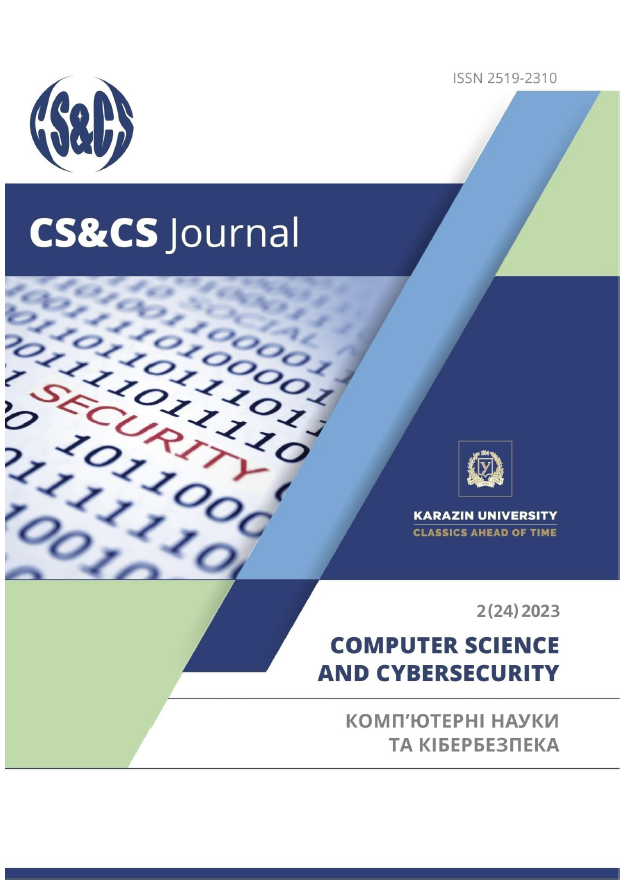Researching the possibilities of using steganographic and cryptographic algorithms for information hiding
Abstract
The organization of information security has always been a relevant task, especially after the emergence of information and communication systems. The fundamental directions in the field of information security, dating back to ancient times, include cryptography and steganography. Cryptography implements information protection by transforming it into an unreadable form. Steganography allows the concealment of information in various containers (such as images, texts, audio recordings), keeping the presence of information unnoticed by casual observers. The article discusses approaches to cryptography and steganography, the concept of hybrid application of cryptographic and steganographic methods to provide a dual-layer data protection, and the overall architecture of cryptographic and steganographic systems. Traditional cryptographic systems applied in modern information security systems include symmetric and asymmetric cryptosystems. Although symmetric systems have evolved with the appearance of new mathematical transformations, they have a significant drawback. It consists of the need for an additional transfer of the secret key to the recipient. Such a strategy requires the use of a protected communication channel equipped with technical protection systems. At the same time, there is a risk of unauthorized access, which can cause the secret key to be compromised. Based on the above problems of symmetric cryptosystems, preference is given to asymmetric algorithms when developing protection mechanisms. An analysis of the RSA cryptosystem, based on an asymmetric encryption approach, has been conducted. This system is used in contemporary authentication protocols and ensures confidentiality in information systems and the Internet. The performance of software modules for key pair generation, encryption, and decryption for the RSA system was investigated by modifying the algorithm's general parameters (transform module, source data size). The results of time measurements are presented in a table, based on which dependencies of time on specific parameter modifications are built. The steganographic algorithm of modification of the least significant bit (LSB), which is used to hide data in images, is studied. Currently, there is a wide range of steganographic algorithms developed based on the characteristics of human sensory systems (such as vision or hearing). The article discusses the properties of the human visual system (HVS) utilized in steganography.
Downloads
References
Zamula, O. A., Horbenko, Y. I., &Shumov, O. I. (2010). The Regulatory and Legal Framework of Information Security. Integrated Information Protection Systems. Kharkiv: KhNURE.[In Ukrainian]
Kuznetsov, O. O., Yevseyev, S. P., & Korol, O. G. (2011). Steganography. Kharkiv: KhNEU.[In Ukrainian]
Shekhanin, K., Gorbachova, L., & Kuznetsova, K. (2021). Comparative analysis and study of information carrier properties for steganographic data hidden in cluster filesystems. Computer Science and Cybersecurity, (1), 37-49.[In Ukrainian]
https://periodicals.karazin.ua/cscs/article/view/17266/15910 DOI: https://doi.org/10.26565/2519-2310-2021-1-03
Kuznetsov, A., Shekhanin, K., Kolgatin, A., Kuznetsova, K., & Demenko, Y. (2018). Hiding data in file structure. Computer Science and Cybersecurity, 9(1), 43-52.[In Ukrainian]https://periodicals.karazin.ua/cscs/article/view/12013
Lesnaya, Y., Goncharov, M., & Malakhov, S. The results of modeling attempts of unauthorized extraction of stego-content for various combinations of an attack on the experimental steganographic algorithm. Scientific Collection «Inter Conf», (141), 338–345. Retrieved from https://archive.interconf.center/index.php/conference-proceeding/article/view/2319/2348
Yesina, M., & Shahov, B. (2021). Research of implementation of candidates of the second round of NIST PQC competition focused on FPGA Xilinx family. Computer Science and Cybersecurity, (1), 16-36.
https://periodicals.karazin.ua/cscs/article/view/17265/15909 DOI: https://doi.org/10.26565/2519-2310-2021-1-02
Konakhovych, G. F., Progonov, D. O., & Puzirenko, O. Yu. (2018). Computer steganographic processing and analysis of multimedia data. Kyiv: "Centerfor Educational Literature".[In Ukrainian]
The Decree of the President on the Regulations on the Procedure for Cryptographic Protection of Information in Ukraine" dated May 22, 1998, No. 505/98. [In Ukrainian] https://ips.ligazakon.net/document/u505_98?an=1&ed=1999_09_27
Lakhno, V. A. (2016). Lecture Notes on the Discipline 'Fundamentals of Cryptographic Information Protection.' Kyiv. [In Ukrainian]
CCNA Cyber Ops (Version 1.1) – Chapter 9: Cryptography and the Public Key Infrastructure. (2019).
Tarnavsky, Yu. A. (2018). Information Security Technologies (pp. 107-108). Kyiv: Igor Sikorsky Kyiv Polytechnic Institute. [In Ukrainian]
Kuznetsov, O. O., Poluyanenko, M. O., & Kuznetsova, T. Yu. (2019). Data hiding in the spatial domain of still images by modifying the least significant bit. Kharkiv: V. N. Karazin Kharkiv National University.[In Ukrainian]


